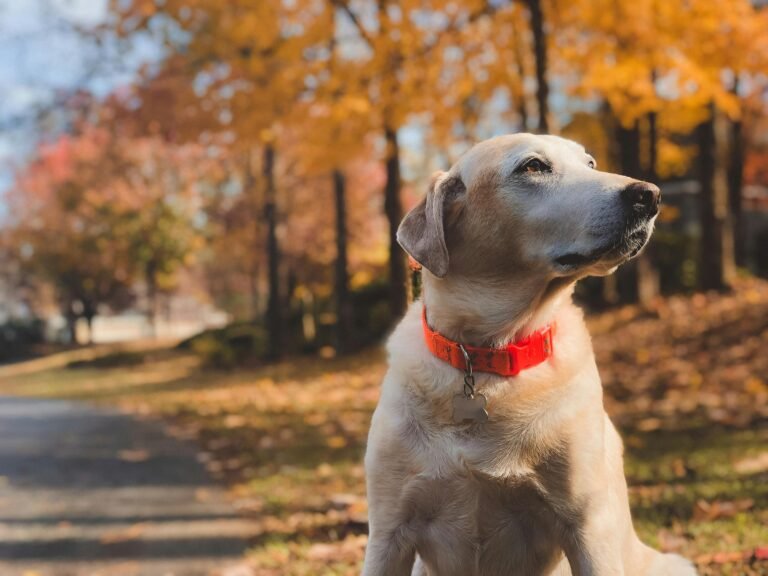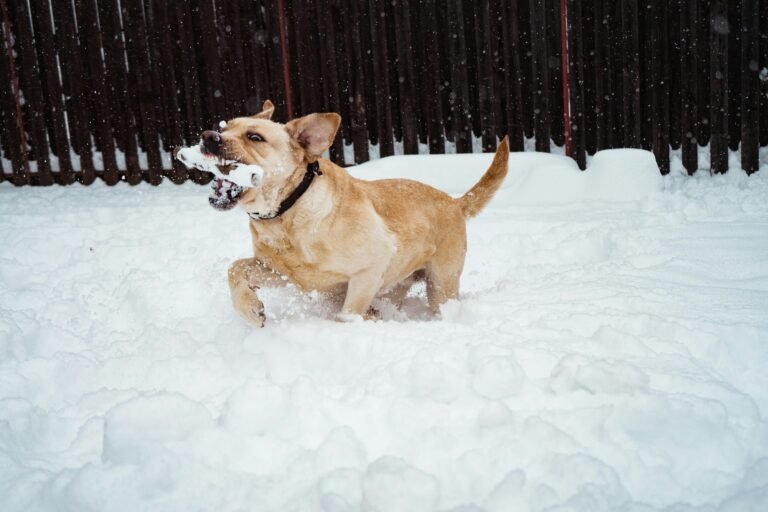Halloween can be a thrilling time of year for families, but for many dogs it is confusing and even frightening. Constant doorbells, costumed strangers, tempting bowls of candy, and eerie decorations can overwhelm a dog who does not understand what is happening. Without proper precautions, Halloween festivities can turn dangerous: chocolate and sugar-free candies containing xylitol are toxic to pets, and anxious dogs may bolt out the front door or become fearful when approached by masked visitors. Fortunately, a little planning goes a long way toward keeping your canine companion safe and calm during spooky season.
This comprehensive guide covers everything you need to know about Halloween safety for dogs: how to manage candy hazards, ease anxiety when trick-or-treaters arrive, decorate responsibly, choose costumes wisely, and ensure your dog stays identifiable and secure. With these tips, you can enjoy a stress-free holiday while protecting your furry friend.
Stash the Sweets: Candy and Treat Hazards
A hallmark of Halloween is candy—lots of it. From chocolate bars to lollipops and gummy treats, bowls of sweets are often left out for trick-or-treaters. Unfortunately, many popular candies pose serious dangers to dogs. Chocolate contains theobromine and caffeine, stimulants that can cause vomiting, diarrhea, tremors, seizures, and even death in dogs. Dark and baking chocolate contain the highest levels, but even milk chocolate can make a dog sick. Sugar-free candies often contain xylitol, a sweetener that can cause rapid insulin release, leading to dangerously low blood sugar and liver failure.
To prevent accidental ingestion:
- Store candy in closed containers out of your dog’s reach. Don’t leave candy on low tables or counters where a curious snout could sneak a treat.
- Remind children and guests that human candy is not for pets. Offer them dog-safe treats if they want to include your pup in the fun.
- Keep trash secure. Dogs may raid the garbage for candy wrappers, which pose choking and intestinal blockage risks.
- Prepare pet-friendly snacks. Frozen pumpkin puree, crunchy apple slices, or commercial dog treats shaped like pumpkins can help your dog feel included without the hazards.
If you suspect your dog has eaten chocolate or xylitol, contact your veterinarian or the ASPCA Animal Poison Control Center immediately (888-426-4435). Prompt treatment is essential.
Managing Trick-or-Treaters: Doorbell Anxiety and Stranger Danger
For dogs, a constantly ringing doorbell accompanied by a parade of costumed strangers can trigger fear, excitement, or territorial aggression. The ASPCA recommends keeping pets in a separate, comfortable room away from the front door during peak trick-or-treating hours. Here’s how to create a calming environment:
- Set Up a Safe Space: Choose a quiet room where your dog feels secure. Place their bed, favorite toys, and a bowl of water inside. Soft music, white noise, or a calming playlist can help mask the sound of the doorbell and voices outside.
- Provide Enrichment: Offer a long-lasting chew or stuffed puzzle toy to occupy your dog’s mind. Licking and chewing are soothing activities that can reduce stress.
- Desensitize Ahead of Time: In the weeks leading up to Halloween, practice ringing the doorbell and rewarding calm behavior. Gradually introduce your dog to friends wearing hats or masks so the concept of costumes becomes less frightening.
- Monitor Behavior: If your dog shows signs of extreme anxiety—pacing, drooling, whining, or attempts to escape—stay with them to provide reassurance or consider using a veterinarian-approved calming supplement.
If your dog must greet visitors, keep them on a leash and ensure they cannot bolt through the open door. Teach them a reliable “go to place” cue so they can retreat to a mat or bed when the door opens.
Decorate With Care: Avoiding Hazardous Props
Jack-o’-lanterns glowing on porches and spooky decorations fill neighborhoods at Halloween. While festive, some decorations can be dangerous to pets. Lit pumpkins with candles can be knocked over by a wagging tail, potentially causing burns or starting a fire. Electric string lights and animatronic decorations have cords that dogs might chew, leading to electric shock or intestinal blockages.
To decorate safely:
- Use battery-operated LED candles in pumpkins instead of open flames.
- Place decorations, electrical cords, and extension cables out of reach or secure them with cord protectors.
- Avoid small items like fake eyeballs, rubber spiders, and plastic skeleton fingers that a dog could swallow.
- Supervise dogs around inflatables or noisy decorations. The sudden movement or sound can startle them.
If you have a yard display, walk your dog through it during daylight to familiarize them with new objects. This may reduce fear when they encounter the decorations later.
Costume Sense: Dressing Your Dog Safely
Nothing is cuter than a dog dressed as a taco or superhero—unless the costume causes discomfort. The ASPCA advises that costumes should never restrict your pet’s movement, vision, hearing, or ability to bark. Some dogs simply hate wearing clothes, and forcing them into an outfit can lead to stress or injury. Here are guidelines for safe canine costumes:
- Start Simple: If your dog is new to wearing clothes, begin with a bandana or lightweight shirt. Gradually work up to more elaborate outfits if they seem comfortable.
- Check the Fit: Costumes should be snug enough to stay on without constricting. Check for tight elastic bands around the neck, legs, or belly. A proper fit allows your dog to walk, sit, and lie down easily.
- Avoid Dangling Pieces: Buttons, strings, and loose fabric may tempt your dog to chew. They also pose a choking risk.
- Supervise at All Times: Don’t leave your dog unattended while wearing a costume. If they appear distressed—tail tucked, ears pinned back, or pawing at the outfit—remove it immediately.
- Test Before the Big Night: Let your dog wear the costume for a few minutes on different days leading up to Halloween. Reward them with treats so they associate the outfit with positive experiences.
Remember: it’s okay if your dog prefers to go au naturel. A festive bandana or collar charm can still show holiday spirit without causing discomfort.
Identification and Outdoor Safety
With the door opening frequently, there is a higher risk that a frightened dog will escape. Proper identification is crucial in case they get lost. The ASPCA recommends ensuring pets are microchipped and wearing collars with current ID tags. Reflective gear and a secure leash help keep your dog visible and under control when out after dark.
- Check ID Tags: Make sure your dog’s tags have your current phone number and address. If your pet is microchipped, verify that your contact information is up to date with the registry.
- Use Reflective Collars and Leashes: Cars may have difficulty seeing dogs at night. Reflective or LED collars and leashes improve visibility.
- Keep Dogs on Leash: Even if your dog is normally well-behaved off leash, unpredictable sights and sounds can spook them. Keep them leashed when walking after dark or when opening the door to greet trick-or-treaters.
- Secure Your Yard: Inspect fences and gates to ensure there are no gaps. Consider walking your dog before dark so they are less excited during evening festivities.
Planning a Dog-Friendly Halloween
If your dog is particularly anxious, you might choose to skip trick-or-treating at your house or spend the evening away from the chaos. Plan a fun alternative:
- Host a small Halloween party for dogs during daylight, complete with costume-optional photo ops and dog-safe snacks.
- Take your dog on a hike or to a quiet park during peak trick-or-treat hours, returning home when things have calmed down.
- Create a “sniffari” scavenger hunt in your yard or living room, hiding treats in safe places to keep your dog engaged and happy.
- If you plan to attend a pet-friendly parade or event, check that it’s well-organized with separate spaces for dogs and plenty of water stations. Observe your dog’s body language and leave if they seem overwhelmed.
Conclusion
Halloween should be fun for the whole family, including your four-legged members. By proactively managing candy hazards, giving your dog a quiet space away from constant door activity, using decorations and costumes responsibly, and ensuring proper identification and control, you can prevent most common mishaps. Organizations like the ASPCA emphasize that pet safety starts with awareness—knowing that chocolate and xylitol are poisonous, that costumes can be stressful, and that pets should always have ID tags and reflective gear when outside.
If an accident occurs, keep the ASPCA Animal Poison Control Center’s number handy and contact your veterinarian immediately. With these precautions in place, you and your dog can enjoy a safe and happy Halloween filled with treats, not tricks.






